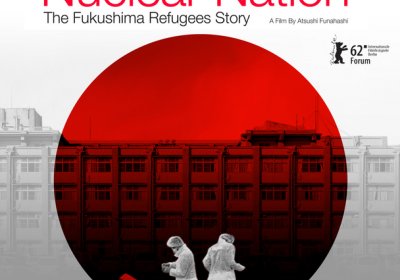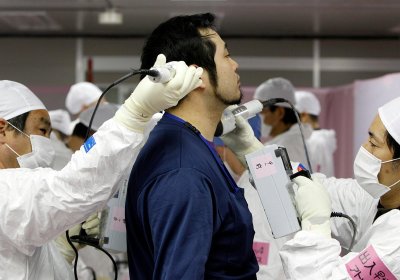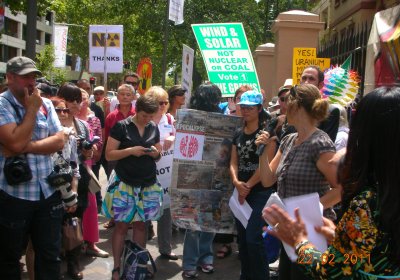Members of the Korean community and supporters gathered outside the Japanese Consulate to protest the plan to release radioactive waste from the Fukushima nuclear reactor into the Pacific Ocean. Coral Wynter reports.
Fukushima
More than $120 billion has already been spent stabilising the stricken Fukushima site, and the crisis continues. Dave Sweeney and Sue Wareham report.
Nuclear power is currently enjoying a flurry of interest in Australia. But those promoting nuclear power are almost exclusively from the far right of the political spectrum, writes Jim Green.
"Remembering Fukushima: Resisting nuclear waste dumps!" was the title of a public forum held in Redfern on March 3. About 40 people heard a panel of speakers mark five years since the Fukushima tsumani and nuclear disaster in March 2011 and outline the growing opposition movement to federal government plans for a nuclear waste dump in rural Australia.
"The nuclear industry has no place in a safe and sustainable future. Five years since the Fukushima disaster, it is time to break the nuclear chain," forum publicity stated. The forum was organised by Uranium Free NSW.
“Forgetting Fukushima makes it more likely that such a nuclear disaster could happen elsewhere,” said Tatsuko Okawara, one of the hundreds of thousands of victims of the Fukushima accident that began on March 11, 2011.
The nuclear industry, however, is trying its hardest to make us forget. It is downplaying the impacts of the accident, ignoring the fact that the Fukushima reactors are still not under control and claiming that lessons have been learned. Nothing is further from the truth.
Events were held around the country on March 11 to mark three years since an earthquake and subsequent tsunami laid waste to the north-east coast of Japan. The earthquake and tsunami disasters killed 18,600 people and about 2700 bodies have never been recovered.
The disaster damaged the Fukushima nuclear power plant, whose cooling systems failed, leading to a series of explosions and catastrophic meltdowns in three reactor cores. More than 150,000 people who were forced to evacuate the area are still unable to return to their homes in the Fukushima region.
About 160 people attended the Sydney premiere of Nuclear Nation on August 9, also known as Nagasaki Day.
This new documentary by Atsushi Funahashi explores the lives of refugees from Japan's Fukushima nuclear disaster.
March 11 was the first anniversary of the Tohoku earthquake and tsunami in north-east Japan and the meltdowns, explosions and fires at the Fukushima nuclear plant.
The impacts of the nuclear disaster have been horrendous. More than 100,000 people are still homeless and some will never be able to return.
Homeless, jobless, separated from friends and family, the toll on people's health and mental well-being has been significant — one indication being a sharp rise in suicide rates. One farmer’s suicide note simply read: “I wish there wasn’t a nuclear plant.”
A snap rally was held outside NSW parliament house on February 22 to protest a bill proposed by Premier Barry O’Farrell to lift the 26-year moratorium on uranium exploration in NSW. The Nature Conservation Council and Beyond Nuclear Initiative organised the rally.
The moratorium on nuclear exploration in NSW began as a bipartisan agreement between Liberal and Labor parties after an investigation found that the effects of mining would be too dangerous.







